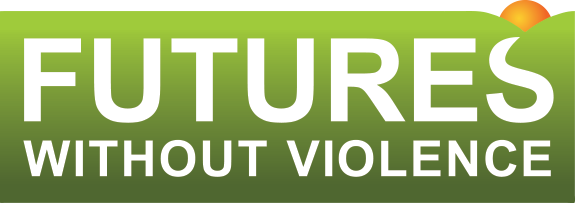Institute for Leadership in Education Development (I-LED) Visual Series
Image Description: [The title heading is “An Accidental Educator’s Guide to the Adult Learner.”] [Below the title heading are nine boxes: top left: Safety; top center: Choice; top right: Based on Need; middle left: Social; middle center: The Adult Learner; middle right: Active; bottom left: Goal-oriented; bottom center: Self-Evaluation; bottom right: Practical] Theories to Practice: There are many theories on adult learning, from Kolb’s experiential learning to andragogy to Women’s Ways of Knowing. It can be intimidating. These theories share commonality and this is a compilation of the prevailing considerations across theory for meeting the learning needs of the adult learner.
Image Description: [The title heading is “Distance Learning: Facilitation”] More than 6.3 million students in the U.S.–most of whom were undergraduates–took at least one online course in Fall 2016. Today, 79% of all online students and 76% of alumni say that online education is “better than” or “equal to” on-campus education. Distance learning has the potential to meet the needs of adult learners, but only with adequate facilitation.
.
Preparing students for Distance learning
- Do the families have a device that can access their children’s curriculum?
- Do the families have reliable internet service (WiFi) in their homes?
- Provide the families with all the necessary login information ex: code/links/etc.
- If families do not have access to the necessary devices, mail or deliver hard copies the instructional materials/projects to the students’ home.
.
Access and Communication
- Verify that students are able to access online learning platforms.
- Stay in contact with the families and students regularly to update them regarding any changes via e-mail, school website, social media, phone call, etc.
- Document all communications including: phone call logs, e-mails, online meetings, attendance, text messages, etc.
.
Helping families and students transition
- Provide resources to families on how to help their children have a smooth transition with remote learning ex: Google Classroom, Zoom, Canvas, LMS Learning System, etc.
- Encourage parents to stick to a schedule such as e-learning time, outdoor time, etc. to help the children a well-balanced lifestyle
- Some families are not technology proficient–make sure to have a FAQ resource and be ready to help troubleshoot issues
Image Description: [The title heading: “The Accidental Educator’s Guide to Instructional Design for Adults: Storytelling] [Title subheading: Teaching is not your primary job, yet you find that teaching has become an integral aspect of getting your job done. Perhaps you are a lawyer, police officer, healthcare worker, or other professional working with survivors of violence. You have limited to share information to your peers in a way that it will create change. But how? Tell a story.]
.
Cognitive psychologist Jerome Bruner suggests we are 22x more likely to remember a fact when it has been wrapped in a story. Why?
.
Stories organize abstract material into a meaningful structure. Remember how you learned the names of planets as a child? Stories act like mnemonic devices.
.
Stories trigger emotions and transport us. Our brains are more likely to easily recall stimulus that is attached to emotions. They allow us to suspend disbelief and put ourselves in the shoes of others.
.
Stories challenge us and our misconception. Dan Johnson in Basic and Applied Social Psychology found that reading fiction significantly increased empathy others.
.
Stories are familiar and accessible. Humans have been feeling stories for thousands of years, sharing them orally even before the invention of writing.
.
“The best stories start by establishing the setting and introducing tension through conflict. The turning point, when the tension is at its highest is the climax, and what follows is the resolution of the conflict, establishing a new normal for the characters.” — Briar Goldberg
.
Keep it short and powerful. Follow it with a connecting activity, i.e., an active exercise that allows the learner to apply the learning through analysis, discussion, or reflection.
Image Description: [The title heading is “Distance Learning: Best Break Tips.”] One of the most frequent questions we receive is, “How often should we incorporate breaks in a live, virtual education session?” There are no hard and fast rules, but here are some approaches we have come across. We commend trying different approaches and combining these concepts based on objectives, content, audience, level of engagement, and ratio of listening-to-doing that is involved in your session. The more “just listening” you expect from learners, the more breaks you need. As always, incorporate assessments or status checks to see the learners’ energy levels and respond with flexibility. If your learners need a break, provide a quick break.
[From left to right]
The Mix-It-Up: Change activity every 25 to 30 minutes. Some research shows that shifting the attention after 25 or 30 minutes can increase students’ attention. Incorporate a break into the rotation after 2-3 activity changes.
The Reliable Rest: Give a 5-minute break every 30-45. Learners are told about this in advance and come to rely on the breaks so you must adhere to your own rule.
The Old College Try: Provide 5-10 minute every 55 minutes of class.
20-20-20: This is something used with children in distance learning. Every 20 minutes give the learner at least 20 seconds to look at something 20 feet away. For accessibility consideration, adapt this to a longer break.
Difficulty in Digesting: Consider what level of cognitive exertion and undisturbed attention without action is expected and incorporate breaks accordingly. The more passive learning you utilize (lectures), the more breaks you need.
In Person Practice: How often do you break during in person education sessions? We recommend going no more than 80-90 minutes without a 15-20 minute break for in-person workshops. See how that works in your web session.
Image Description: [The title heading is “Adult Learning Online.”] Adults learn differently and while some things are different in eLearning, lots of fundamentals are the same. Here are 3 things you should know about adult learning online.
.
Learning vs. Training
- Stop thinking about learning as a “one and done.”
- If you want someone to learn something, it’s a process.
- Learning is hard work–it even makes you hungry.
.
Adults Instruction is different than Child Instruction
- The number one thing to realize about how adult learners differ from children is the existence of live experience.
- Adult learners prefer content that involves relevant, timely and realistic problem solving
.
Instructional Design is Key
- What is the problem you seek to solve or your goal?
- Do a needs assessment for skill and knowledge gaps.
- Take the time to write objectives based on your learners’ needs.
- For each objective, consider your resources, audience, capacity, and tools.
- Then consider, what is the best way to reach this audience?
- Design activities that offer learners ability to Absorb, Do and Connect.


